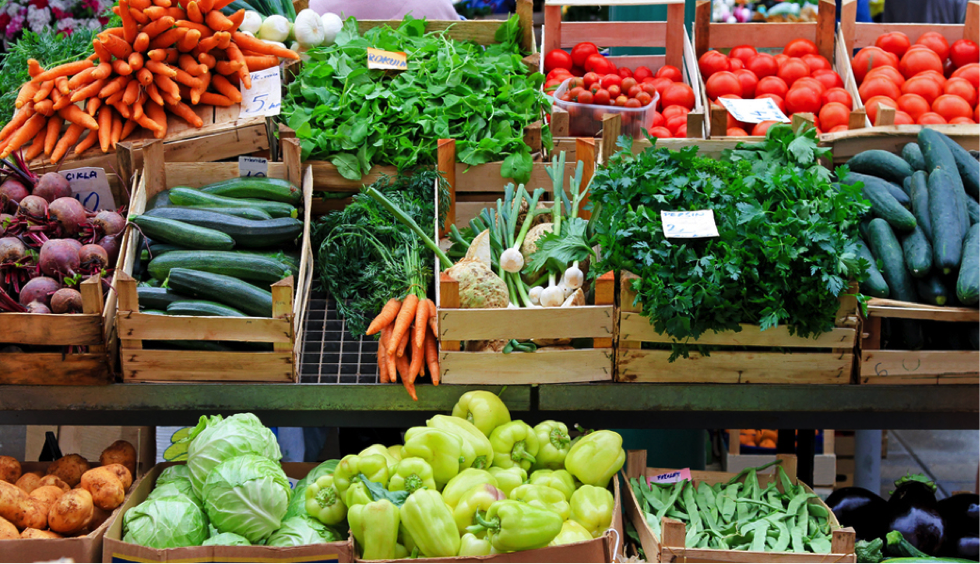 Shutterstock
Shutterstock
Technology + Food
At first glance, it might appear that these two are a strange pair. Food in its most unadulterated form is tangible and comes direct from the Earth (for now at least, see the thing about the pizza below), while technology and the associated data are more abstract and seemingly come from Silicon Valley, or, if you’re here in St. Louis, the Cortex. But lately, as tech continues to become even more tightly woven into every aspect of our lives, this particular combination has been making headlines and garnering buzz for some weird and wonderful partnerships.
Innovative combinations like hydroponics and the Internet of Things, apps and reducing food waste, and even pizza-making and 3D printers have been spurring a technologically-driven food boon. Everywhere you look, food and technology are intersecting.
Even tech giants are making food a focus. Fast Company wrote an article at the end of July about Google working to engineer a plant-based “power dish” for their menu at their new campus. And, word spread very fast last month about the e-commerce giant, Amazon’s $13.7 billion purchase of Whole Foods. With such large tech companies moving into the food scene, it will be very interesting to see what’s going to become more popular in food technology, and food trends in general, in the coming months and years.
It’s important to note that, at the same time this is all happening, food as it relates to health and ethical consumption has increasingly become a topic of conversation and debate in the world of politics, wellness, and sustainability. Documentaries like Fed Up, What the Health, and the forthcoming Wasted! The Story of Food Waste, the latest project featuring the renowned chef, author, and television personality, Anthony Bourdain, have a lot of people paying more attention to where their food is coming from and how it found its way onto their plates. People want to know just how good their typical meals are for their health, and it’s placed a spotlight on where our food is coming from and where it goes when we’re finished with it.
THE RIVER CITY: EATING LOCAL IN STL
This awareness has already led to a shift in shopping habits and preferences at the consumer level. Here in St. Louis we’re already starting to see individual consumers take a more deliberate approach to their food purchases. And one of the biggest trends to come from an increased focus on our food and eating habits has been the rise in popularity of the Eat Local trend. On the technology front, innovations like Square are making it easier for small family farms to sell their produce, and the internet and social media have been a blessing for local CSAs (Community Supported Agriculture which helps consumers buy seasonal food directly from local farms) and Farmers Markets.
Health conscious and local-minded consumers can follow their favorite Markets on Facebook for updates and use sites and LocalHarvest.org to connect with CSA supported growers in the area. Throughout the growing season, markets like the Tower Grove Farmers’ Market provide a great way for St. Louisans to support area farmers and get their hands on some fresh and healthy produce. Some markets like the Soulard Farmers’ Market are even open year-round.
Restaurants are also in on the Eat Local movement. Popular eateries like Café Osage , Lulu’s Local Eatery, Five Bistro and Winslow’s Home are gaining in popularity and are touted for their local fare. With locally sourced eateries, discerning and conscientious consumers in the area can be sure that the food they’re eating is fresh and grown nearby. In the case of Café Osage, the ingredients hardly have to travel at all as most of their dishes are crafted featuring produce from their garden right across the street.
 A view of the patio at Café Osage. Source: http://www.bowoodfarms.com/index.cfm/fuseaction/cafe.showpage/pageID/3/index.htm
A view of the patio at Café Osage. Source: http://www.bowoodfarms.com/index.cfm/fuseaction/cafe.showpage/pageID/3/index.htm
FEEDING LOCAL
Also on the forefront as eating out and eating local are becoming trendier, is an increased awareness on the prominence of food deserts in many areas of the country. While eating local can be good for the local economy and the health and wellness of area patrons, it’s important to note that there are also many area locations and organizations working to ensure we don’t just Eat Local, but we Feed Local too.
Initiatives like Gateway Greening which promotes and organizes community gardens, rooftop and urban gardens like Urban Harvest STL, and St Louis MetroMarket, a mobile food market, and are all local efforts to decrease the prevalence of food deserts in the metro area and to ensure that every St. Louisan has access to nutritious foods. Because 3-D pizza isn’t quite as cool knowing there are people who can’t even access fresh produce.
Follow the links to above to learn more and support local food production. And be sure to let us know if we missed your favorite local eatery or farmers’ market in the comments below!